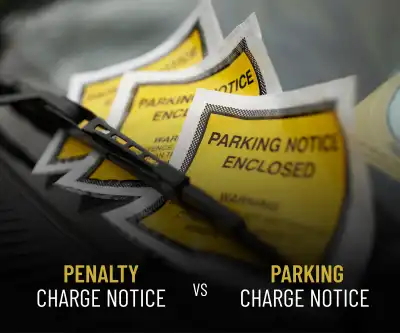
More than three million drivers in the UK currently have penalty points on their licence. That’s a huge number—and if you’ve ever been caught speeding, using your phone while driving, or accidentally running a red light, you could be one of them.
Tempcover took a deep dive into DVLA licence data to uncover the most common offences, the towns and cities with the most penalised drivers, and how these points could be affecting things like your car insurance—especially if you’ve never reported them. Before we get into the full details, here are a few stats that might surprise you.
Speeding is by far the most common offence, and men aged 56 are the most likely group to be caught. More than 10,000 drivers in the UK are currently sitting on 12 or more points, which is the threshold for being disqualified. Shockingly, one driver has a staggering 176 points. Perhaps even more worrying is the number of people not owning up to their mistakes. Only 43 percent of drivers tell their insurance provider after getting points, and just over half have even mentioned it to their partner.
The Most Common Driving Offences
According to DVLA data, speeding is responsible for around 68 percent of all driving penalties, making it the most common offence by far. That’s followed by running red lights (14 percent), using a mobile phone while driving (11 percent), careless driving (9 percent), and parking in dangerous places (8 percent).
Interestingly, nearly one in five drivers admitted they’ve boasted about how many penalty points they’ve received. Whether it’s a misguided badge of honour or just a conversation starter at the pub, it seems some drivers aren’t taking their offences as seriously as they should.
Where Are the Worst Offenders?
Which town has the highest proportion of penalised drivers?
| Rank | Location | Population | Drivers with points | % |
| 1 | Worthing, West Sussex (BN13) | 10,312 | 1,379 | 21.5% |
| 2 | Coldstream, Scottish Borders (TD12) | 1,289 | 170 | 21.2% |
| 3 | Wimborne, Dorset (BH21) | 21,427 | 2,761 | 20.7% |
| 4 | Dartford, Kent (DA10) | 6,658 | 788 | 19.1% |
| 5 | Boston Spa, West Yorkshire (LS23) | 9,149 | 1,066 | 18.8% |
| 6 | Skipton, North Yorkshire (BD23) | 16,424 | 1,885 | 18.5% |
| 7 | Newquay, Cornwall (TR8) | 8,221 | 891 | 17.5% |
| 8 | Wetherby, West Yorkshire (LS22) | 15,747 | 1,625 | 16.6% |
| 9 | Exeter, Devon (EX5) | 18,799 | 1,920 | 16.4% |
| 10 | Banwell, Somerset (BS29) | 2,588 | 261 | 16.2% |
Some towns in the UK have a much higher percentage of drivers with points on their licence. Worthing in West Sussex tops the list, with over 21 percent of drivers in the area carrying points. Close behind are Coldstream in the Scottish Borders (21.2 percent) and Wimborne in Dorset (20.7 percent). Many of the worst-offending areas are coastal towns, which might suggest that quieter, rural roads don’t always equal safer driving habits.
Which area has the highest number of drivers with penalty points?
| Rank | Location | Population | Drivers with points | % of drivers |
| 1 | Croydon, Greater London (CR0) | 153,812 | 7,005 | 7.3% |
| 2 | Leicester (LE2) | 119,003 | 5,474 | 7.4% |
| 3 | Leicester (LE3) | 101,091 | 5,402 | 8.6% |
| 4 | Iver, Bucks (SL6) | 77,532 | 5,384 | 11.2% |
| 5 | Bristol (BS16) | 75,733 | 4,647 | 9.9% |
| 6 | Willesden, Greater London (NW10) | 91,959 | 4,344 | 7.6% |
| 7 | Walthamstow, Greater London (E17) | 103,402 | 4,343 | 6.8% |
| 8 | Northampton (NN3) | 68,995 | 4,317 | 10.1% |
| 9 | Slough, Berkshire (SL1) | 70,367 | 4,242 | 9.7% |
| 10 | Nottingham (NG16) | 63,697 | 4,189 | 10.6% |
If we shift focus to the sheer number of drivers with points, Croydon in South London leads the way. Over 7,000 drivers in the CR0 postcode are currently penalised. Leicester also features heavily, with two postcode districts—LE2 and LE3—each having more than 5,000 drivers with points. Other hotspots include Bristol, Slough, and Nottingham, where thousands of drivers are on the radar for driving offences.
How Many Points Can You Get?
The UK government allows courts to issue fines and add penalty points—also known as endorsements—if you're convicted of a driving offence. Depending on how serious the offence is, those points can stay on your driving record for anywhere between four and eleven years.
If you rack up 12 or more points in the space of three years, you could be banned from driving. For new drivers (those who passed within the last two years), the rules are even stricter. Occasionally, courts might offer leniency if a ban would cause extreme hardship, like the loss of a job or housing, but those situations are rare.
How to Check Your Points
If you’re unsure whether you have points or how long they’ll stay on your record, you can check your driving licence online using the official GOV.UK service. It’s a quick and free way to make sure you’re aware of what’s on your licence and when those points might expire.
How Penalty Points Affect Insurance
Failing to disclose penalty points to your insurer could cause serious problems. Almost half of UK drivers don't tell their insurance provider after receiving points, which could invalidate their policy. That means if you’re involved in an accident or need to make a claim, you might not be covered at all.
If you’re unsure how to navigate the situation, it’s worth seeking professional insurance advice. But the best way to avoid any complications is simply to drive safely and stick to the rules of the road.
How to Avoid Getting Points
The easiest way to avoid penalty points is to follow the Highway Code. That means observing speed limits, stopping at red lights, avoiding mobile phone use while driving, and parking responsibly. Simple, everyday decisions can make a big difference in keeping your licence clean.
If you’re caught speeding, you may be offered a place on a speed awareness course instead of receiving points. These courses are part of the National Driver Offender Retraining Scheme and are designed to educate drivers on road safety and the dangers of speeding.
If you’ve been accused of a driving offence, you have the option to either accept the penalty or challenge it if you believe you weren’t in the wrong. Either way, you must inform your insurer about the situation—even if the case is still ongoing.
In short, stay alert, drive sensibly, and be transparent if things go wrong. It’s the best way to protect both your driving record and your insurance policy.




